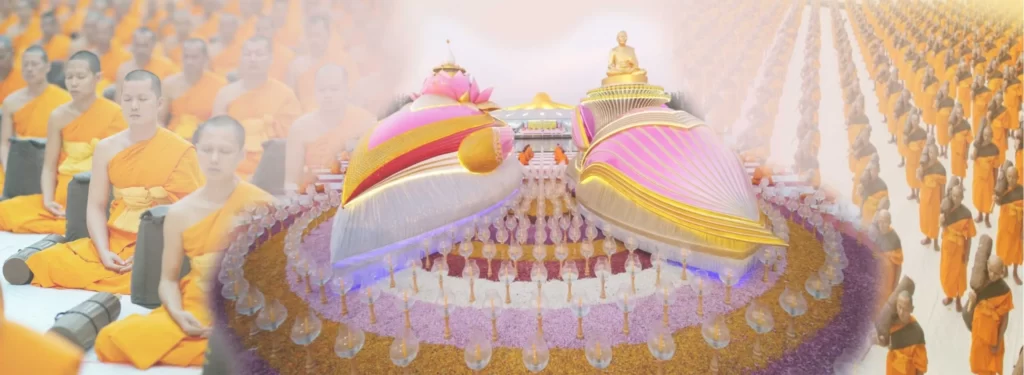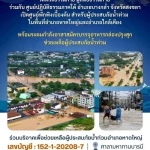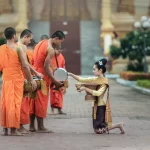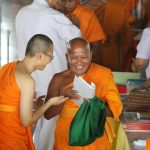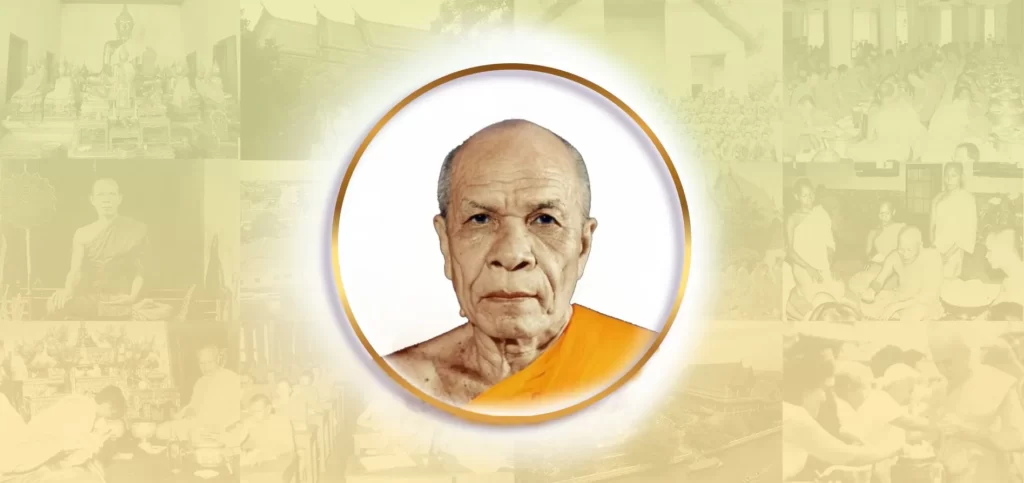
Phramongkolthepmuni (Sodh Candasaro)
10 October
Great Master
Phramongkolthepmuni (Sodh Candasaro), also known as Luangpu Wat Paknam, is one of the most well-known meditation masters in Thailand. He was renowned for teaching a profound Vipassana technique called Dhammakaya meditation. Successfully practicing this method leads practitioners to discovering a refined inner body called the Dhammakaya that resides—largely undiscovered—within every human being. His famous quote “Stop Is the Key to Success” captures the true essence of this powerful meditation technique.
With his wish for everyone to discover true happiness, he consistently taught mediation to the public until he became widely recognized as one of top mediation teachers of the country. His teachings attracted many monks, novices and laypeople to Wat Paknam to learn meditation. Over time, Dhammakaya meditation has gradually been propagated throughout the country and around the world to the point where it is now widely known and practiced.
However, Luangpu was not only known for his meditation mastery, he was also highly respected for various other virtues. While taking the duty as the abbot at Wat Paknam Bhasicharoen, he gained a wide reputation for his knowledge and skill at teaching the Dhamma. Due to Luangpu’s endurance, hard work, and management skills, he was also able to establish a school where a large number of monks and novices could also pursue education in Pali and Dhamma studies. Many monks, novices and lay people alike also revered and respected Luangpu for the love and compassion that he showed to all like a caring father to a child. Luangpu’s academic and meditative excellence coupled with his compassionate nature allowed Wat Pak Nam and Dhammakaya to prosper.
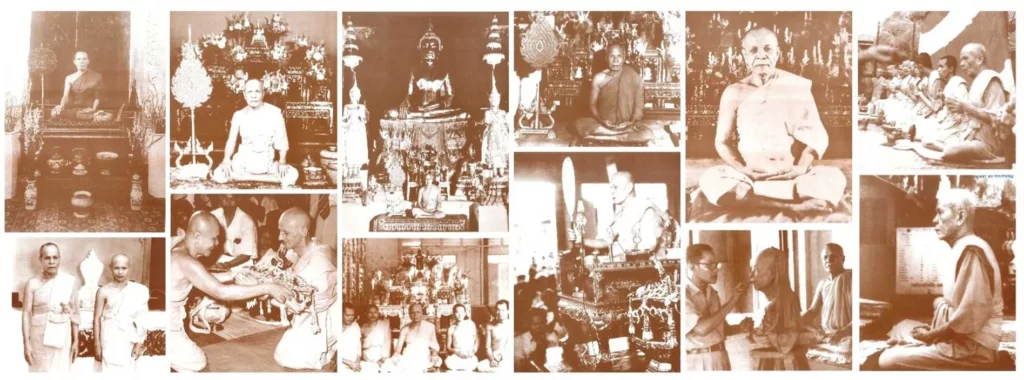
A Biography of Luang Pu Wat Paknam
Luangpu was born as Sodh Mikaewnoi on October 10, 1884 to the family of Ngeun and Sutjai Mikaewnoi in Songpinong, Suphanburi, 60 miles west of Bangkok. At age nine, Sodh began formal education with his uncle, a monk at Wat Songpinong. He studied Khmer characters at Wat Bang-pla, Bang-lane district, Nakon Prathom Province until he was able to read and write fluently.
After he finished his elementary studies, he helped his father in his rice trading business. He would typically help two or three times a month to buy rice from farmers, ship it along the waterways, and sell it to rice mills in Bangkok and Nakorn Chaisri, a district of Nakorn Pathom.
At the age of 14, Sodh’s father passed away leaving him to take care of his rice trading business. Sodh’s earnestness, hard work and intelligence soon won the love and respect of his crew as well as his relatives. His business prospered and the family became well established.
The Awakening
On one trading trip when he was nineteen, Sodh sold all of his rice in Bangkok and headed home., He took a detour through Klong Bang-Eetan (which was later renamed Klong Bang-nangtan) in order to avoid the treacherous waters of the main river. This specific waterway was typically infested with pirates and bandits. As he travelled this route, he thought:
“To make a living is difficult. My father lived his life making a living like this. He had no time. Always rushing to earn money. If he would not have done this, he would be a low-class man that no one respects. He would be ashamed to socialize with his neighbors. My ancestors also lived the same path. Now I myself still follow this same path even after my ancestors have already died. Why should I focus on making such a living when after I die, I cannot take all these assets with me? I shall ordain.”
He then made a wish:
“May I not die. May I have a chance to ordain and once I ordain, I will not leave the Buddhist monkhood. I will be a monk throughout my entire life”
After setting his intention, he became worried with his mother’s future. Therefore, he worked very hard in order to save enough money for his mother to live comfortably for the rest of her life.
Ordination
In July 1906, Sodh was ordained at Wat Songpinong at the age of twenty-two. His monastic name was ‘Candasaro’, which means “the One with a Bright Radiance like the Moon.” The next day after his ordination, he started to learn meditation with Phra Niem at Wat Noi in Bangplama, Suphanburi province. During his first rains retreat at Wat Songpinong, he also studied Buddhist scriptures in addition to his meditation practice. At one point in his scriptural study, he came across a Pali word, ‘avijjapaccaya’, and was curious as to what this word meant. He asked the monks at the temple, and to his surprise, none of them knew the meaning. This made him realize that he needed to go elsewhere to find the knowledge he sought.
After his first rains retreat at Wat Songpinong, he decided to go to stay at Wat Phra Chetuphon Wimon Mangkhalaram in Bangkok to further his knowledge of the scriptures. Besides scriptural study, he also searched for Samatha and Vipassana teachers. Luangpu had the opportunity to study with Thailand’s most renowned masters at various places, quickly achieving mediation results that were much to his teachers’ satisfaction.
Rediscovery of Dhammakaya
In 1917, after eleven years of meditation practice with some of the best teachers Thailand had to offer, Luangpu traveled to stay that rains retreat at the quiet, peaceful Wat Bote-bon, in Bangkuvieng, Nonthaburi. On the full moon night of the tenth lunar month, after attending the fortnightly recitation of the fundamental precepts in the evening with his fellow monks, he proceeded to the main chapel to meditate. Sitting in front of the Buddha statue, he declared:
“Upon this sitting, if I cannot attain even a small part of the ultimate Dhamma realized by the Lord Buddha, then I shall sit unmoved in this spot … or die in the attempt.”
He pleaded to the Buddha:
“May the Most Exalted One show me compassion and grant me the least and easiest of thy Enlightened Knowledge. Should my attainment of thy Enlightened Knowledge bring harm to Buddhism, don’t grant it to me; but if it can benefit Buddhism, then, O Lord, please grant it to me. I shall be thy champion to uphold the greatness of thy Teachings until the last day of my life.”
That night, he meditated until his mind was still. He discovered a supremely bright and pure image resembling that of the Buddha with 32 characteristics sitting deep in meditation, the crest of his crown shaped like a lotus bud. This was the ‘Dhammakaya’—the Body of Enlightenment. Arriving at this stage of experience in meditation is called “attaining Dhammakaya”.
In this moment, he discovered a crystal clear inner body that, in fact, resides—largely undiscovered—within every human being within every human being. As his mind continued to remain perfectly calm and still, several transcendental bodies appeared, one after another, each new one bigger, brighter, and more beautiful than the previous one. Until, finally, a supremely bright and pure image resembling that of the Buddha appeared.
After he attained this deep level of Dhammakaya, he saw in his meditation that Wat Bang-pla, in Bang-lane district, Nakorn Pathom province, would be the first place that he would propagate his new-found Dhammakaya Knowledge. Therefore, he traveled to Wat Bang-pla after the rains retreat. After teaching meditation for four months, three monks and four lay people followed in his footsteps and attained Dhammakaya.
Being the Abbot of Wat Paknam
In 1918, as Somdej Phra Wanarat, the monastic governor for Bhasicharoen District, offered Luangpu the position of acting abbot of Wat Paknam. Luangpu, together with four monks from Wat Phra Chetuphon then moved to Wat Paknam, and two years later, Luangpu was appointed the abbot in 1920. In addition to managing the temple based on strict monastic disciplines, he also energetically promoted Dhamma studies for monks and novices to supplement their moral training.
His daily routine was to lead monks and novices for morning and evening chanting. Every Sunday and Buddhist holy day, he would teach Dhamma in the chapel himself, assembling all the monks to mediate along with him. Every Thursday at 2 pm, he would teach meditation to monks, novices, nuns, temple residents, and the public at large. Due to all of his efforts in this wide variety of fields, he earned the monastic rank of Phramongkolthepmuni in 1957. Luangpu then passed away two years later on February 3, 1959 at Mongkol Candassara Building, Wat Paknam Bhasicharoen at the age of seventy five, thus ending a monastic life of fifty three years.
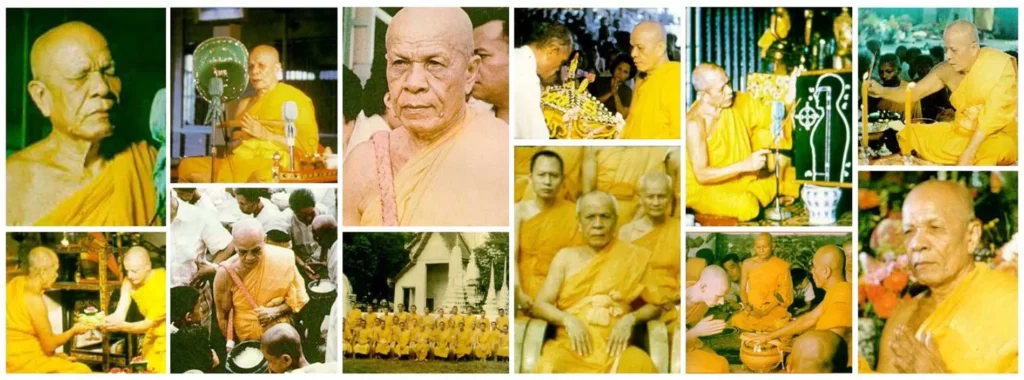
Outstanding Characteristics
Luangpu had several strong characteristics that enabled him to overcome many obstacles and excel at propagating Dhammakaya Knowledge to the general public at that time. If we put in the effort to cultivate these characteristics in ourselves, we will be able to follow in Luangpu’s footsteps by living a more virtuous and morally upstanding life that inspires others to do the same.
Strong Sense of Direction
Luangpu was the kind of person who had a strong sense of direction. This characteristic is most evident in the resolution that he made for his life on that one fateful day on the Klong Bang-Eetan waterway. At this crucial turning point, Luangpu set the intention to ordain and not leave the monkhood until his last breath. Despite not making this resolution to anyone but himself, Luangpu followed through on his non-verbal promise and was able to ordain for life and bring uncountable benefit to Buddhism and the world as a result. He knew his purpose and was unwavering in his efforts from the moment he set out on the path to the very end.
Dedication
Having given up a worldly life once ordaining as a monk, Luangpu devoted his time to diligently studying the Pali Canon and practicing meditation. He always looked for opportunities to deepen his knowledge in both of these areas with masters at various temples for many years until he himself became a master himself. His constant, uninterrupted effort for many years also shows that he kept the promise he had made to himself to stay in the monkhood and seek the truth of life.
Perseverance
Despite uncountable obstacles along the way, Luangpu stopped at nothing to fulfill his deepest yearnings. Luangpu searched far and wide throughout Thailand in order to fully understand the Dhamma through both scripture and meditation practice. Even after 11 years of practicing under different masters, Luangpu never gave up or lost hope despite not attaining the deep level of Dhamma that the Buddha discovered. However, on that 11th year, his persistence paid off as he rediscovered the way to attain the Dhammakaya within. The rediscovery of Dhammakaya attainment was not a coincidence nor easy at all but a result of Luangpu’s perseverance in practicing meditation.
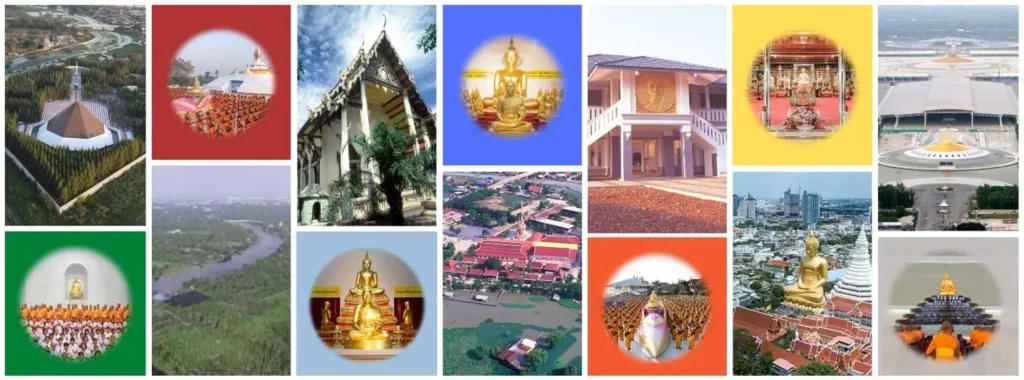
Gold Statues in Honor of Luangpu
After experiencing first-hand how difficult it was to practice properly in order to attain the deepest Dhamma within, Luangpu devoted his life to teaching Dhammakaya mediation. This lineage was passed down to Khun Yai Chand Konnokyoong, and subsequently to Luangpor Dhammajayo who both continued to expound the Dhammakaya meditation technique at Wat Phra Dhammakaya. Since its establishment several decades ago, Wat Phra Dhammaya has continuously taught meditation and morality to the general public. These efforts have helped to cultivate many virtuous people for the society, the nation, and the world.
To express gratitude to Luangpu for bringing the light of Dhammakaya Knowledge into the world and helping us recognize the value of being born as a human to accumulate merit in pursuit of Perfections, Luangpu’s disciples around the world made donations towards the casting of gold statues of Luangpu. These sacred statues were designed for the sake of being enshrined in the seven places that mark the most significant events in his life. These memorial locations are excellent places for future generations to learn about Luangpu’s life and be inspired by his contribution to Buddhism to carry on doing virtuous deeds and follow in his footsteps.
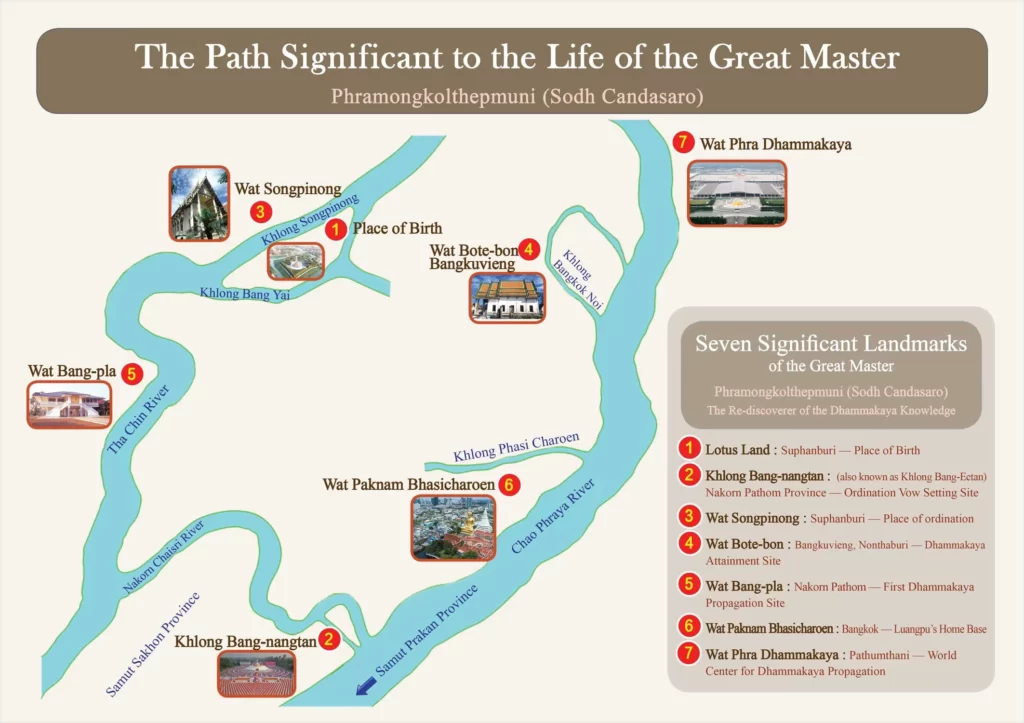
Seven Landmarks of the Great Master
- Lotus Land, Suphanburi — Birth place
- Klong Bang-nangtan (also known as Klong Bang-Eetan), Nakorn Prathom Province — Ordination goal setting site
- Wat Songpinong, Suphanburi — Place of ordination
- Wat Bote-bon, Bangkuvieng, Nonthaburi — Dhammakaya attainment site
- Wat Bang-pla, Nakorn Pathom — First Dhammakaya propagation site
- Wat Paknam Bhasicharoen, Bangkok — Luangpu’s home base
- Wat Phra Dhammakaya, Pathumthani — World center for Dhammakaya propagation

Finding the Right Teacher
Our average life span is about 70-80 years, which does not provide us with much leeway for wasting time through trial and error. If the goal of our life is not aligned with a truly wholesome and beneficial path, we can easily waste an entire lifetime. Thus, it is very important to find the right teacher who can be a role model for us to live righteously. The right teacher can guide us to the true goal of life, that is, to attain the Dhamma within which will bring the utmost happiness that is available to humans. The right teacher can, furthermore, guide us to lead truly meaningful lives for ourselves and others. They can illuminate the path to properly refraining from wrongdoing, doing good deeds, and purifying the mind.
If we did not have Luangpu as a teacher, it would be very time consuming and difficult to search for the true life goal in attaining inner happiness. It might also end up being an unfruitful search. So the best way to pay gratitude to Luangpu for his teaching is by keeping the mind still at the center of the body continuously. Helping as many people as possible discover the way to do this was the highest outcome that Luangpu hoped that his life-long efforts of propagating Dhammakaya Knowledge would produce. If we practice diligently and attain true inner happiness for ourselves, the people around us will be able to feel it and will automatically be interested in learning about meditation to experience this true happiness for themselves.
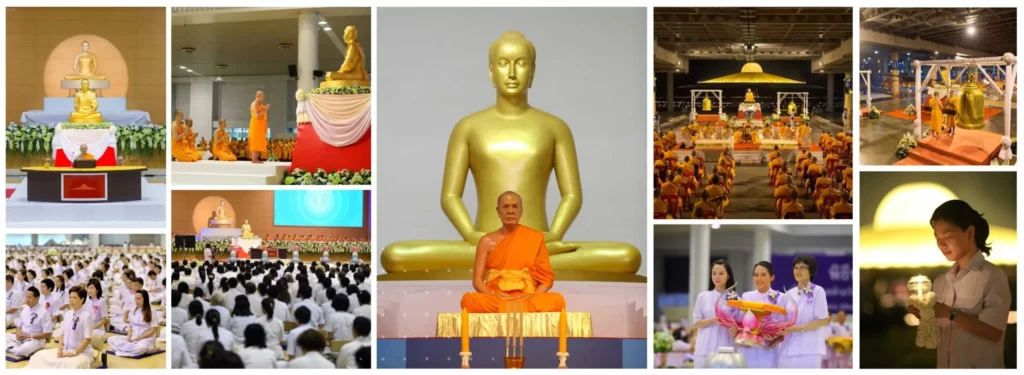
Activities at Wat Phra Dhammakaya in Homage to Phramongkolthepmuni (Sodh Candasaro)
Every year, on the birthday of Phramongkolthepmuni, his disciples all over the world arrange merit-making activities to pay homage to Luangpu for his significant contribution to Buddhism on the rediscovery of Dhammakaya Knowledge. On October 10th this year, Wat Phra Dhammakaya would like to cordially invite Luangpu’s disciples and everyone around the world to pay gratitude to Luangpu by chanting, meditating and spreading loving-kindness together with thousands monks located both domestically and internationally around the world through ‘Zoom’. This shall be a wonderful opportunity for everyone to accumulate merit and pray for the world to be free from various dangers and become more peaceful.
